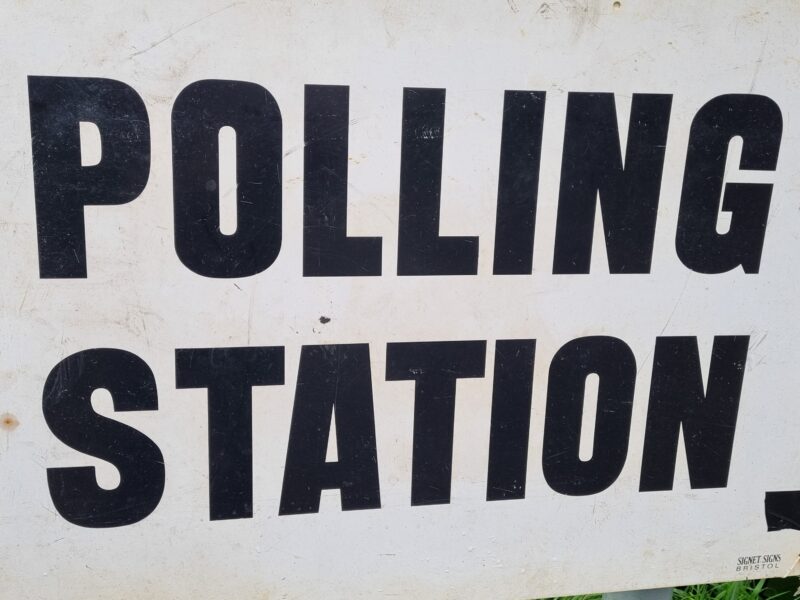Last week two reports were published into Labour’s election defeat in December. One, which got national publicity, was by the ‘Labour Together’ faction and the other, which got no publicity outside of Cumbria, was by Penrith and the Border Constituency Labour Party.
Let us first examine the report from Labour Together, noting that this is not a neutral or unbiased section of the Labour Party, having been set up as an anti-Corbyn organisation soon after his first election as party leader.
Labour Together had its public launch in the New Statesman in October 2015 in an article by Lisa Nandy and Steve Reed, two MPs who the following summer signed the infamous ‘no-confidence’ motion in Corbyn, in an attempt to unseat him. They were among the 80 per cent of Labour MPs who refused to accept the mandate given to the leader by 60 per cent of the Party membership.
A key director of the Labour Together company was Sir Trevor Chinn, listed several times in the register of MPs financial interests as a backer of right-wing Labour MPs and at least one Liberal Democrat MP. He is a well-known supporter of the state of Israel and financially supports the offices of MPs with a similar political view. The aim of their long report is to dress up, sometimes in radical-sounding phrases, what is intended as a justification for rolling back the radicalism of recent years.
Inquiry conclusions written long in advance
The Labour Together inquiry team was headed by former leader Ed Miliband, who also voted to oust Corbyn in 2016; another key member was Lucy Powell MP, who also voted ‘no confidence’ in Corbyn. Her political adviser was on the panel writing the report. As we wrote in an earlier editorial, the inquiry team from the beginning was “packed with opponents of Corbyn and Corbynism. It already has its conclusions written and it is now building a ‘case’ to justify them.”
It makes no difference that the report authors boast thousands of responses to their ‘survey’, because – like all unpublished survey data – this is to give the appearance of a wide-ranging and genuine consultation, in the knowledge that ninety-nine per cent of responses or views can be filed in the bin. The report is full of nice-sounding generalities about “inclusion, diversity, transformation”, being “rooted in daily experiences and struggles of people’s lives”, etc, but it is very sparing on specifics.
When it deals with the long-standing decline of Labour’ support under the Blair and Brown years, it again resorts to generalities, although it cannot avoid hard facts. “Labour’s vote share declined dramatically between 2001 and 2010”, it says, “then recovered marginally in 2015 and increased again substantially in 2017, before collapsing in 2019”.
There is no political analysis about the reasons for the Blair years “dramatic” loss of five million Labour votes, other than a vague reference to disillusioned Labour heartlands. The leader of the Labour Together inquiry, Ed Miliband, was the leader when Labour’s vote recovered “marginally” and Jeremy Corbyn was leader when it improved “substantially” in 2017, but there is no political reason given for this difference. Even in defeat in 2019, it should be noted, Corbyn got almost a million more votes than Miliband in 2015.
Discussion framed more in seats than votes
By framing most of the discussion in terms of the number of parliamentary seats won, rather than the total or percentage of the vote, the report seeks to maximise the damage in the 2019 election and to minimise the success in 2017, when the election was lost, let us recall, by only around 22,000 votes and key Labour staffers in head office were actively working against a victory.
“Labour faces a substantial challenge to win the next election,” the report says, “with a historic swing of over 10 percent needed to gain a majority of one seat. No major party has ever increased their number of MPs by over 60 per-cent, which is what Labour would need to do to win in 2024”.
Yet in 2017, Labour under Jeremy Corbyn did achieve an increase of around 10 per cent of the vote – the biggest increase in Labour’s vote since 1945 – and with many of Labour’s losses in 2019 being effectively marginal seats, they can be won back.
Not wishing to embarrass Keir Starmer, Labour Together deals with the loss of votes on the question of Brexit in 2019, but makes no serious analysis of the reasons for the different perception of Labour in 2017, as compared with 2019. In fact, Labour’s position was changed over those two years precisely because of the political pressure from strong Remainers like Starmer, whose keynote Remain speech at Labour conference in September 2019 was designed to undermine the position of the party leader on the issue. It was that perception – of a party unsure of its own position – that lost Labour so many votes, not that the Labour Together inquiry would dare to mention it. [See our post-election editorial here].
Tone of righteous indignation
The worst element in the Labour Together report is its tone of righteous indignation about “divisions and factionalism” that “undermined our election readiness, with a lack of trust hampering teamwork at all levels of the Party.” Perhaps we should point out a few home truths. Some of the sponsors and authors of this report spent a lot of time attacking the leader of their own party for four long years. Key people in Labour’s own headquarters were deceiving the leader’s office and conspiring to undermine the party’s election efforts in 2017. Incredible as it is, these inconvenient facts do not even rate a mention in the Labour Together report.
Most Labour members will not bother to trawl through the verbiage in this long-winded 150-page report – and the inquiry team know it. Even the authors are not too worried about the detail, mixing a few meaningless ‘radical-sounding’ phrases with what is supposed to pass for analysis. The real point of the report is to find a pretext to roll back the democratic and radical gains of the Corbyn years and it is summarised in a single paragraph, in which the authors recommend the following:
“A strategy group chaired by the Leader and involving key members of the Shadow Cabinet and a political lead tasked with election strategy should be established – responsibilities would be the development of political strategy and the strategic plan to execute it.”
What does this really mean? It means that party conference can go to the dogs, that the aspirations of the membership can be ignored, the insecurities and uncertainties of austerity can be forgotten, while Keir Starmer and a Blairite shadow cabinet will decide what will be Labour policy. It is a catch-all to recapture the party from the grip of its membership.
Penrith and the Borders CLP report is better
If Party members want to read a better report, only a fifth of the length, but with much more detailed and coherent analysis, they should read the report produced by Penrith and the Borders CLP.
Their report is summarised in these words: “The election loss was primarily about Brexit, Jeremy Corbyn’s unpopularity (manufactured or not), the influence of the press and media, the disunity in the Labour Party, the increasing disconnection with northern voters, the loss of Scotland, a weak election campaign and the failure to convince the electorate of the credibility of Labour’s ability to deliver its radical policy commitments.”
But it also notes that Corbyn’s popular appeal “was systematically tarnished by a press and mediathat managed to reframe him as a toxified villain”, something Labour Together glosses over, being among the culprits themselves. “Whoever is the leader,” this report says, “if the Labour Party campaigns on a radical transformational programme, the billionaire press and media barons will again throw everything they’ve got to sabotage Labour’s electoral prospects and the credibility of the leader…Jeremy Corbyn was the surfer who has ridden the wave of renewed and revived political ambitions that aspired to halt the widening gap between the rich and powerful and the poor and oppressed: he was not the wave!” (emphasis added)
Brexit voters were key to defeat
The Penrith CLP report correctly focuses on the issue of the lost ‘Brexit’ votes. “Of the 54 of the seats that the Conservatives gained from Labour (Labour lost 60 seats in all), 52 of them were in areas that voted leave in 2016.”
It then looks at the different perceptions of Brexit from 2017 to 2019. “Ironically, it was Jeremy Corbyn who called for Article 50 to be triggered ager the referendum result in 2016, went to the polls in the 2017 General Election promising to honour the referendum result…By suggesting that there could be a second referendum once a Labour deal was negotiated, and with many of the Shadow Cabinet vociferously supporting Remain, huge swathes of Labour voters clearly felt abandoned and betrayed.”
You will not find this incisive analysis in the Labour Together report, because it is too inconvenient for Starmer, the Shadow Cabinet member, above all, who was “vociferously supporting Remain.”
This report mentions explicitly the “constant ferocious and fierce bombardment of Jeremy Corbyn’s leadership” which undoubtedly had an effect on the election. “It hasn’t helped that several Labour parliamentarians have been stabbing Jeremy Corbyn in the back for years, publicly stating that he is unfit to lead the Labour Party and the country.” Again, this is not something the Labour Together report will highlight, being among the chief detractors of Corbyn themselves.
“Despite overwhelming support from the membership, several Labour MPs simply refused to accept Corbyn’s two landslide leadership victories. Put plainly, this is not the behaviour of democrats or of people who respect the Labour Party members who work so tirelessly to get them elected…It is outrageous that Jeremy Corbyn’s uncomradely critics are now blaming him for the party’s electoral misfortunes.”
New Labour responsible for Labour North decline
In a very perceptive and detailed look at the decline in Labour’s vote in the North, the Penrith CLP report noted that the decline in Labour loyalty “was begun when the architects of New Labour became the custodians of traditionally rock-solid Labour constituencies: Tony Blair (Sedgefield), Peter Mandelson (Hartlepool), David Miliband (South Shields) and Alan Milburn (Darlington). If ever there was a badly calculated, bizarre mis-match, this was it! Between 1997 and 2005 Labour support in these constituencies plummeted: in Hartlepool the majority dropped from 17,000 to 5,000; in South Shields from 22,000 to 11,000; in Darlington from 13,000 to 3,000; and in Sedgefield from 25,000 to 8,000.” Again, something that is taboo for the ‘report’ mashed up by Labour Together.
We would recommend to Labour Party members, in the interests of balance, that they read both reports and compare them. But a word of warning is due. Reading the report from Penrith and the Borders CLP first will give a complete and rounded analysis of an election that ought not to have been lost. Reading the Labour Together afterwards will probably induce a justified anger at all those issues too inconvenient to be dealt with.
June 22, 2020



